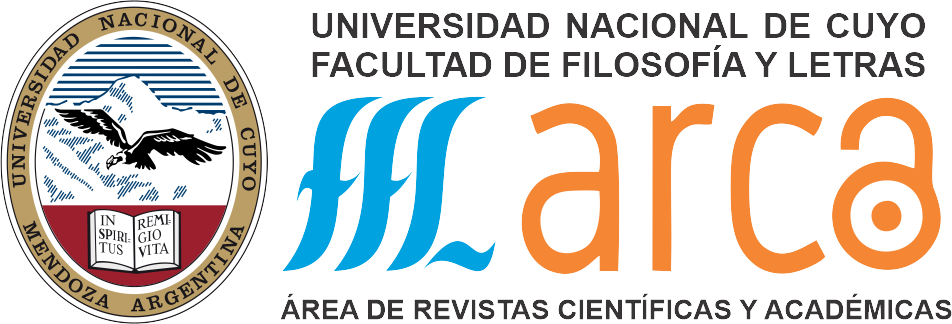The schizo-city on Museo de la Novela de la Eterna
The body as a way of city-making in the Utopian Socialism of Macedonio Fernández
DOI:
https://doi.org/10.48162/rev.34.098Keywords:
urban studies, utopian socialism, self-government, Buenos AiresAbstract
Set in the context of the technological revolution at the end of the 19th century in Buenos Aires, Museo de la Novela de la Eterna (1967) by Macedonio Fernández traces back to utopian socialism (Owen, Fourier, 1800) to center the social as a way of producing city. Taking his conservative modernism as a premise (Armstrong, 1998), this article argues that Fernández’s novel dismantles the divergence between ideology and technique that since 1848 have repurposed the practices of urban planning and architecture as a mere technological problem (Frago Clols y Martínez-Rigol, 2016)., Fernández equates the body (the social) and urbanism (city) as a literary device to propose a new relationship between evolution and technology towards self-government and the politicization of bodies with functional diversity as a form of anarchy (Garland-Thomson, 1997). The body in Museo de la Novela de la Eterna produces a non-normative city that could be normativized as a “schizophrenic city” and that, in turn, becomes an articulating element of society.
References
Aliata, F. (2010). La construcción de la ciudad capital. Imaginarios urbanos en Buenos Aires y Montevideo en la primera mitad del siglo XIX. L'Ordinaire des Amériques. Independencias y museos en América Latina. La creación de objetos históricos, 212, 105-126. https://journals.openedition.org/orda/2497
Antonucci, S. Beneitez, M., Gabai, S. y Turconi, O. (2009). Radio Universidad Nacional de La Plata. 85 Aniversario, 1924-2009. Toda una vida. Edulp. http://sedici.unlp.edu.ar/handle/10915/25263
Armstrong, T. (1998). Modernism, Technology, and the Body: A Cultural Study. Cambridge University Press.
Butler, J. (2017). Cuerpos Aliados y Lucha Política: Hacia una teoría performativa de la asamblea. Paidós.
Di Tella, A. (1995). Macedonio Fernández. Argentina.
Fernández, M. (1996). [1967]. Museo de la Novela de la Eterna. Signatarios Acuerdo Archivos Allca XX Universitè Paris X.
Fontanals, G. (2015). Historia de las telecomunicaciones en Argentina (Parte 1). Fibra. Tecnologías de la Comunicación. (26), s. p. http://papel.revistafibra.info/historia-de-las-telecomunicaciones-en-argentina-parte-1/
Fourier, C. (2024). El Falansterio: La utopía de la felicidad social. Marge Books.
Frago Clols, L. y Martínez-Rigol, S. (2016). Las utopías urbanas del siglo XIX, Herencias y Carencias: la carencia social frente la herencia técnica. XIV Coloquio Internacional de Geocrítica. Las utopías y la construcción de la sociedad del futuro. Universidad de Barcelona. https://www.ub.edu/geocrit/xiv_fragomartinez.pdf
Garland-Thomson, R. (1997). Extraordinary Bodies: Figuring Physical Disability in American Culture and Literature. Columbia University Press.
Gómez Arciniegas, C. (2017). La ciudad ideal de Robert Owen. “Un escenario planificado del socialismo utópico. Revista M., 14, s. p. Facultad de Arquitectura. Universidad Santo Tomás. Colombia.
Gómez Pintus, A. (2014). La configuración histórica del Gran Buenos Aires: transformaciones y debates en torno al objeto. Revista UNAL. Universidad Nacional de La Plata (CONICET).
Katz, J. y Kosacoff, B. (1989). El Proceso de Industrialización en Argentina: evolución, retroceso y prospectiva. Cepal-CEAL.
Kropotkin, P. (1972). El anarquismo. Vértice.
Montiel T. (2015). Ebenezer Howard y la Ciudad Jardín. ArtyHum, Revista digital de Artes y Humanidades, 9, 118-123.
Rama, C. (1977). Utopismo socialista (1830-1893). Colección Librería Ayacucho. Caracas.
Zanini, G. (7 de junio de 2016). El Intento de conocer a Macedonio Fernández. Marcha, s. p. https://www.marcha.org.ar/intento-conocer-macedonio-fernandez/
Downloads
Published
How to Cite
Issue
Section
License
Copyright (c) 2024 Ricardo Martin Coloma

This work is licensed under a Creative Commons Attribution-NonCommercial 4.0 International License.





















